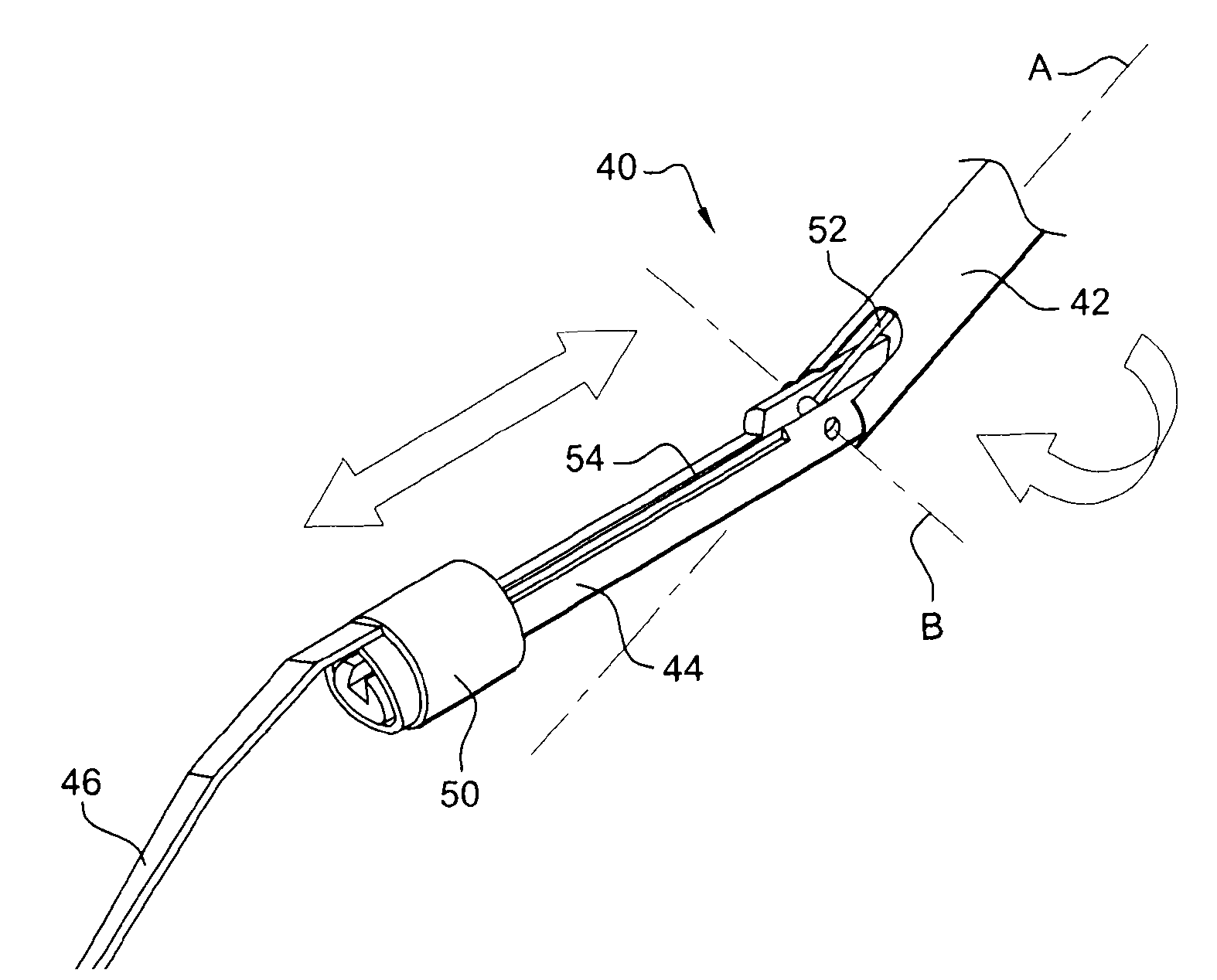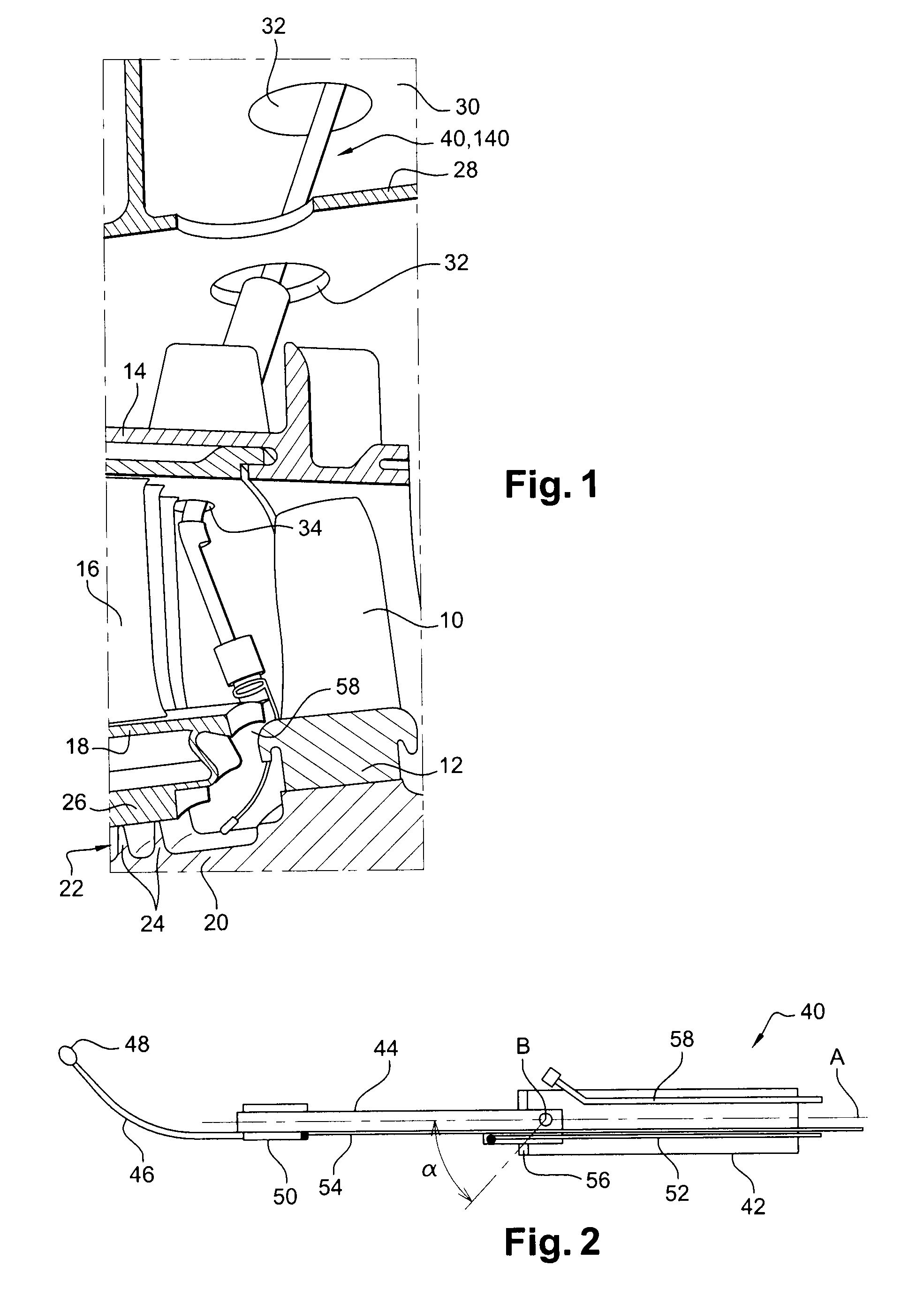Device for the non-destructive testing of parts in a turbomachine
a turbomachine and non-destructive testing technology, which is applied in the direction of magnetic property measurement, material magnetic variables, instruments, etc., can solve the problems of difficult access to turbomachine areas, limited access to this rod, and inability to always be possible, so as to facilitate the movement and positioning of the rod
- Summary
- Abstract
- Description
- Claims
- Application Information
AI Technical Summary
Benefits of technology
Problems solved by technology
Method used
Image
Examples
Embodiment Construction
[0024]Reference is made first of all to FIG. 1, which shows schematically a part of a turbomachine, in particular a turbine or compressor stage of this turbomachine.
[0025]This turbine or compressor stage comprises an annular row of rotor blades 10 carried by a disc 12 and rotating inside a substantially cylindrical wall 14, and an annular row of stator blades 16 disposed upstream of the rotor blades 10 and carried at their radially external ends by the wall 14. The stator blades 16 are connected at their radially internal ends to an annular platform 18, this platform 18 and the external periphery of the disc 12 delimiting with the wall 14 the gas flow stream in the turbomachine.
[0026]The platform18 surrounds a substantially cylindrical rotor wall 20 connecting the rotor disc 12 to another rotor disc (not visible) situated upstream of the stator blades 16.
[0027]A seal of the labyrinth type is mounted between the rotor wall 20 and the platform 18, and comprises annular lips 24 extendi...
PUM
| Property | Measurement | Unit |
|---|---|---|
| thickness | aaaaa | aaaaa |
| width | aaaaa | aaaaa |
| angle | aaaaa | aaaaa |
Abstract
Description
Claims
Application Information
 Login to View More
Login to View More - R&D
- Intellectual Property
- Life Sciences
- Materials
- Tech Scout
- Unparalleled Data Quality
- Higher Quality Content
- 60% Fewer Hallucinations
Browse by: Latest US Patents, China's latest patents, Technical Efficacy Thesaurus, Application Domain, Technology Topic, Popular Technical Reports.
© 2025 PatSnap. All rights reserved.Legal|Privacy policy|Modern Slavery Act Transparency Statement|Sitemap|About US| Contact US: help@patsnap.com



